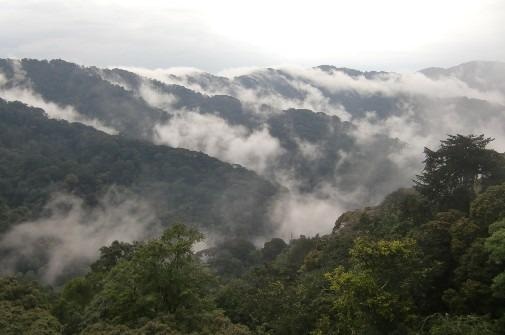Reviewed by Alex SmithAug 26 2021
Researchers investigating African mountains were surprised to discover the amount of carbon being stored and the rate at which the forest cover is depleted.
 Montane forest in Rwanda. Image Credit: Johan Wingborg.
Montane forest in Rwanda. Image Credit: Johan Wingborg.
The research found that the intact tropical mountain (or montane) forests in Africa are capable of storing about 150 tonnes of carbon per hectare. This implies that protecting a hectare of forest cover saves CO2 emission equal to powering 100 homes with electricity annually.
The study was published on August 25th, 2021, in the journal Nature.
The research identified that African mountain forests store more carbon per unit area compared to the Amazon rain forests. They also have a similar structure to the lowland forests in Africa. Current guidelines for African mountain forests, which assume 89 tonnes of carbon per hectare, are an underestimation of their contribution to global climate control.
Deforestation
The international research team analyzed the stretch of land that has been cleared from the African continent in the past two decades. It was found that 0.8 million hectares have been deforested mostly in Uganda, Ethiopia and the Democratic Republic of the Congo. This resulted in the emission of over 450 million tonnes of CO2 into the atmosphere. Continuation of the current rate of depletion will further destroy 0.5 million hectares of forest by 2030.
The results are surprising because the climate in mountains would be expected to lead to low carbon forests. The lower temperatures of mountains and the long periods they are covered by clouds should slow tree growth, while strong winds and steep unstable slopes might limit how big trees can get before they fall over and die.
Dr. Aida Cuni-Sanchez, Study Lead Author, Department of Environment and Geography, University of York
Dr. Cuni-Sanchez continued, “But unlike other continents, in Africa we found the same carbon store per unit area in lowland and mountain forests. Contrary to what we expected, large trees remain abundant in mountain forests, and these large trees (defined as having diameters over 70 cm) store a lot of carbon.”
Better Knowledge
The scientists quantified 72,000 trees in 44 mountain sites in 12 African nations, starting from Guinea to Ethiopia to Mozambique in the south. In every mountain location, they formed plots where they noted the height, diameter, and species of the tree.
According to the researchers, a better understanding of the carbon storage capacity of mountain forests is particularly important for the 10 African countries. In these countries, tropical forests are found only in mountains.
While we know what makes African forests special, we don’t yet know why they are different. It is possible that in Africa, the presence of large herbivores such as elephants plays an important role in mountain forest ecology, as these large animals disperse seeds and nutrients, and eat small trees creating space for others to grow larger, but this requires further investigation.
Dr. Aida Cuni-Sanchez, Study Lead Author, Department of Environment and Geography, University of York
According to study co-author Dr. Phil Platts, from York’s Department of Environment and Geography and the IUCN’s Climate Change Specialist Group, “About five per cent of Africa’s tropical mountain forests have been cleared since 2000, and in some countries the rate exceeds 20 per cent. Besides their importance for climate regulation, these forests are habitats for many rare and endangered species, and they provide very important water services to millions of people downstream.”
Forest Restoration
A majority of the African countries have committed large stretches of land to forest restoration with respect to the Bonn Challenge. Forest restoration is crucial to overcome climate change, but controlling deforestation is a higher priority.
Previous carbon estimates for tropical mountain forests in Africa were much lower than the values we report in our study. We hope that these new data will encourage carbon finance mechanisms towards avoided deforestation in tropical mountains. As outlined in the Paris Agreement, reducing tropical deforestation in both lowland and mountain forests must be a priority.
Dr. Martin Sullivan, Study Co-Author, Department of Natural Sciences, Manchester Metropolitan University
Dr. Gerard Imani, co-author of the study from the Department of Biology, Université Oficielle de Bukavu in DR Congo, stated, “Carbon finance mechanisms could help improve conservation interventions on the ground — even within protected areas, deforestation, forest degradation and defaunation remain a challenge.”
Journal Reference:
Cuni-Sanchez, A., et al. (2021) High aboveground carbon stock of African tropical montane forests. Nature. doi.org/10.1038/s41586-021-03728-4.